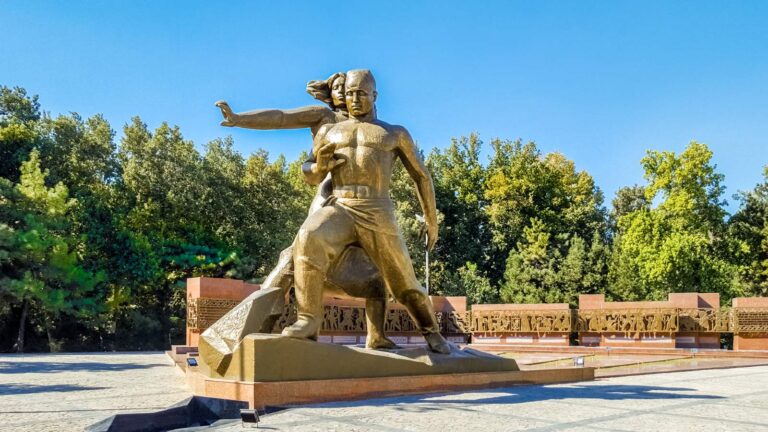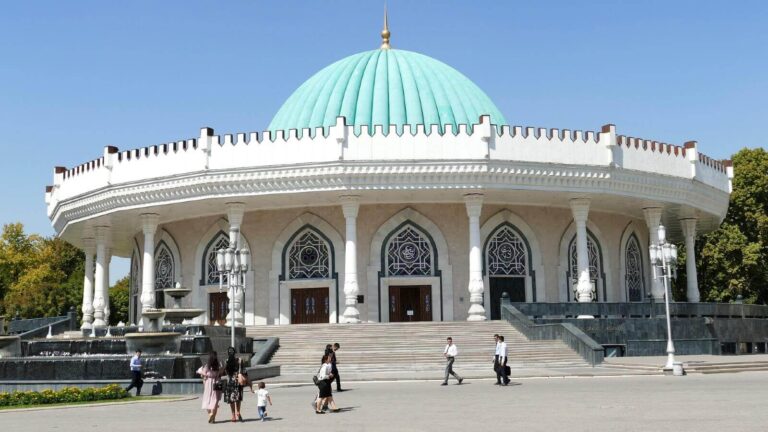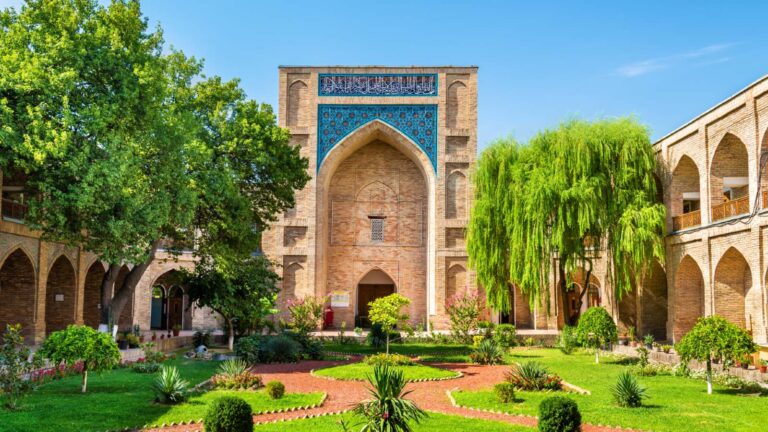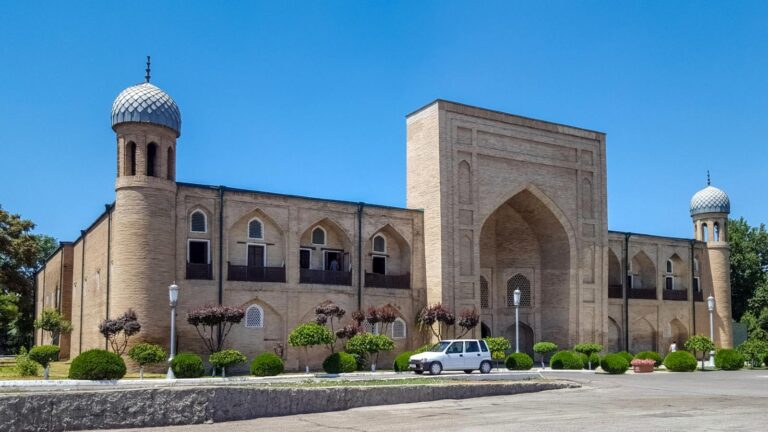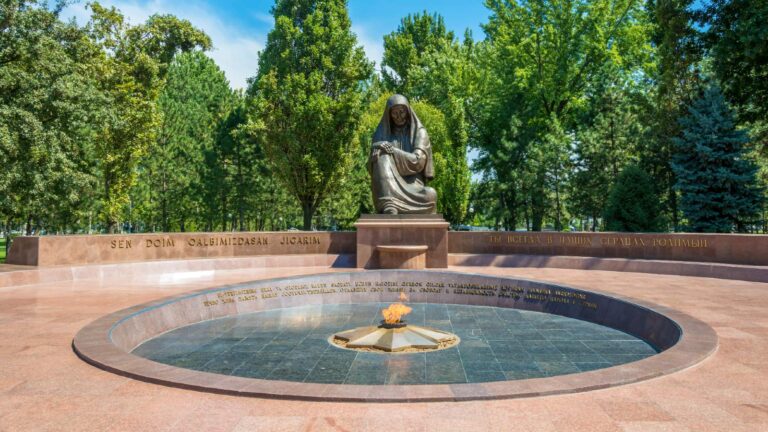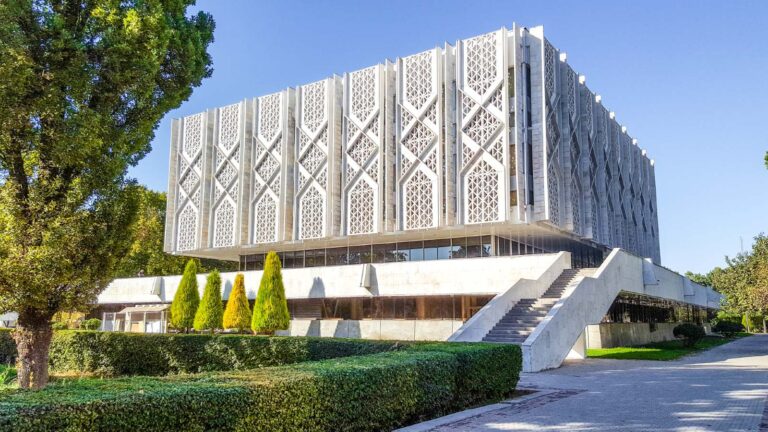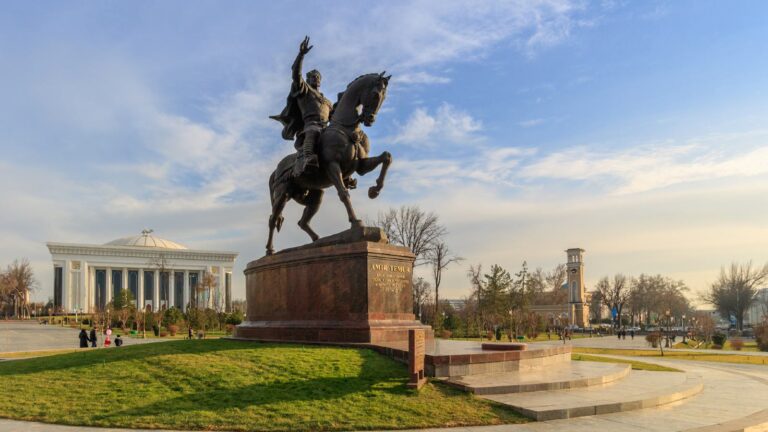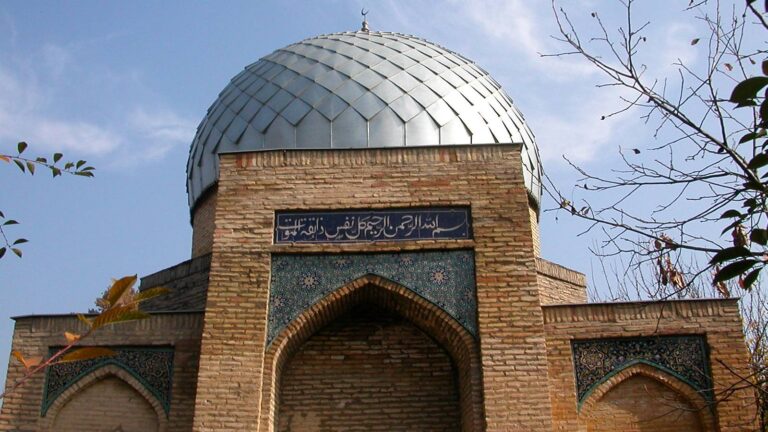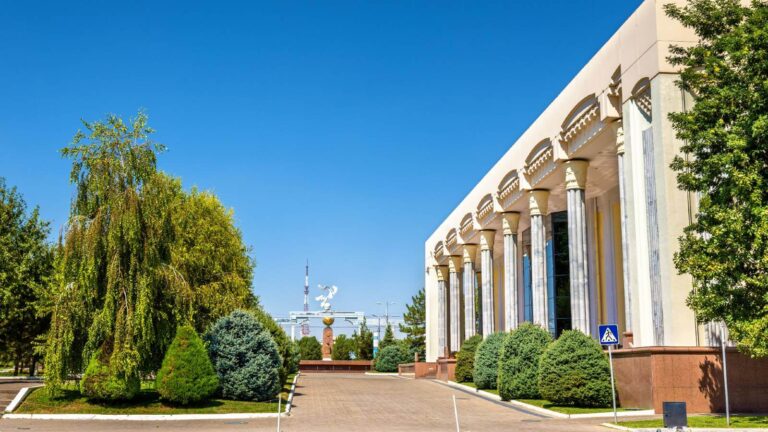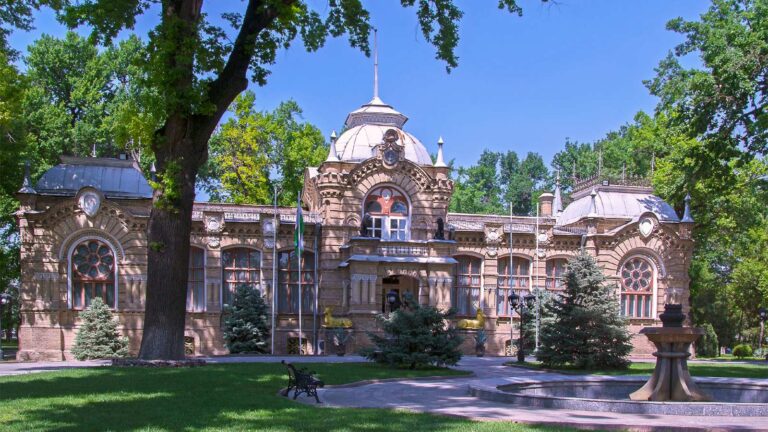Main image: Alexpickul, CC BY-SA 3.0, via Wikimedia Commons
Getting There
The museum is located next to the Northern Railway Station (Tashkent-Passenger station building), at a distance of about 400 meters to the north-east.
The most convenient way to get to the Railway Museum by metro. The nearest station is Tashkent, blue line. Once you exit the station, you will immediately notice an imposing arch, marking the museum entrance.
Ground public transport stops are also nearby. One can get to the attraction by buses No. 12, 14, 40, 46, 62, 69, 70, 93 and by route taxis No. 11 m, 67 m, 102 and get off it on Tashkent stop.
If you are moving around Tashkent in a private or rented car, keep in mind that there are parking lots near the museum, but due to the close proximity to the railway station, you might face a problem to find free space in the parking lots.
Another way to get to the Railway Museum is by taxi. Yandex Taxi operates in Tashkent. There are also several other services like City Taxi, Mytaxi, Milliy taxi and Uni taxi.
What to Expect
The collection of the museum’s exhibits, consisting of more than a dozen steam locomotives, electric locomotives, carriages and other equipment used for repairs on railway tracks, is located in an open space. Several carriages housed objects telling the history of the railway origin and development in this region.
In addition to railway equipment, the museum also displays equipment that was previously used on the railways: semaphores, Morse-based radio transmitters and much more. In the exhibition cars you can get acquainted with the railroad workers uniforms of different years, awards for services on the railway, as well as the history of the railways development in Central Asia. The museum itself is more like a park, it has an elongated shape of almost a kilometer, so tours around it are carried out on a small train running through the site.
The presented means of communication and the railway workers uniforms tell about the specifics of work in the last century.
The main exhibits in the Tashkent Railway Museum are as following:
- Mainline freight steam locomotives
- TE-52 trophy military steam locomotive (was produced in the territory occupied by the Germans during the Second World War)
- E class steam locomotives, manufactured in Canada and the USA
- Steam locomotive P36 – the most powerful in the museum and the last passenger steam locomotive produced in the USSR
- Shunting steam locomotive tank 9P
- E class steam locomotives
- Steam locomotive OV (sheep) – the oldest museum exhibit, depicted on a postage stamp of Uzbekistan in 1999, has appeared in a number of movies
- SU class steam locomotive – the first main-line passenger steam locomotive in the USSR
- Among the cars, the most interesting is the double-deck dome rail wagon, released in 1965
- DA class diesel locomotives, supplied from the USA, and their modification TE1 – the first Soviet diesel locomotive, which began to be produced after the Great Patriotic War.
History
The Tashkent Railway Museum is part of the Association of Railway Museum and the largest in Asia. The opening took place in the end of the 80s-beginnig of 90s.
The event background is connected with the celebration of the railway centenary in Central Asia. Collections of locomotives previously operating on this railway were demonstrated at the main railway station in Tashkent.
The residents and city guests agiotage, as well as the receipt of requests, prompted the city administration to make the exhibition permanent. Thus, on August 4, 1989, on Railwayman Day, the museum solemnly opened its doors to visitors.

